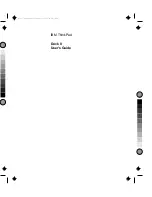
Troubleshooting
56
Why is the capacity representation of the hard disk
drive (HDD) in Windows different from the product
specifications?
The capacity of the storage device (HDD or SSD) of the
manufacturer is calculated assuming that 1 KB = 1,000 Bytes.
However, the operating system (Windows) calculates the storage
device capacity assuming that 1 KB = 1,024 Bytes, and therefore
the capacity representation of the HDD in Windows is smaller than
the actual capacity. The capacity representation in Windows may
be smaller than the actual capacity because some applications
occupy a certain area of the HDD outside of Windows.
For models with the
Samsung Recovery
application, the HDD
capacity representation in Windows may be smaller than the
actual capacity because the
Samsung Recovery
application
uses a hidden area of 5–20 GB of the HDD to save the recovery
image, and that hidden area is not counted towards the total
size available to Windows. The size of the
Samsung Recovery
application varies by model.
Samsung Recovery
What is a Recovery Area?
The computer has an additional partition for restoring data or
saving backup files (only for models with the
Samsung Recovery
application). This partition is called a Recovery Area and it
includes a recovery image comprised of the operating system and
applications.
















































